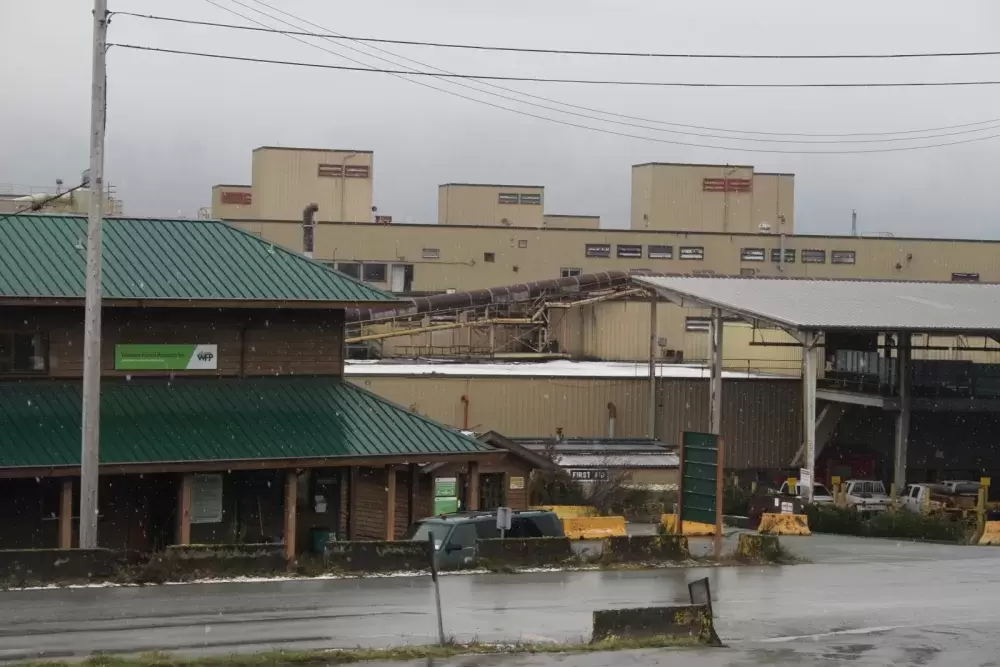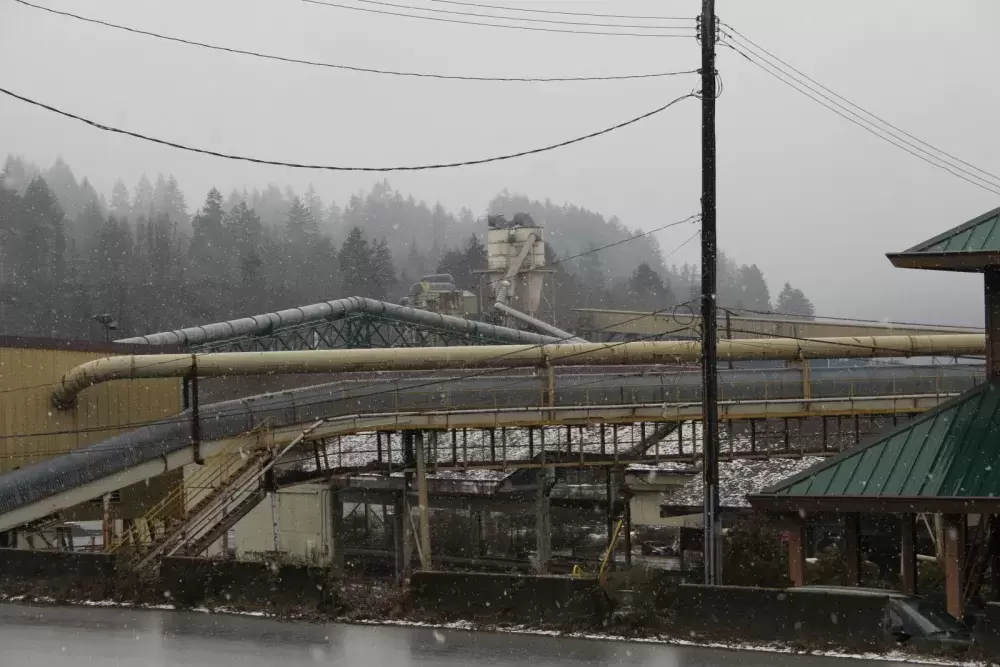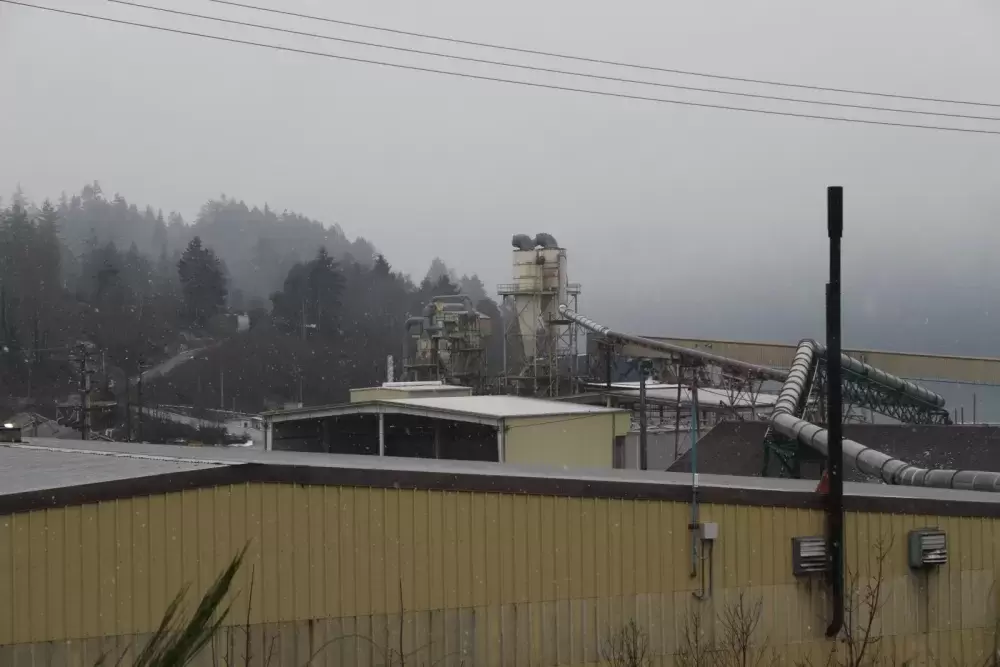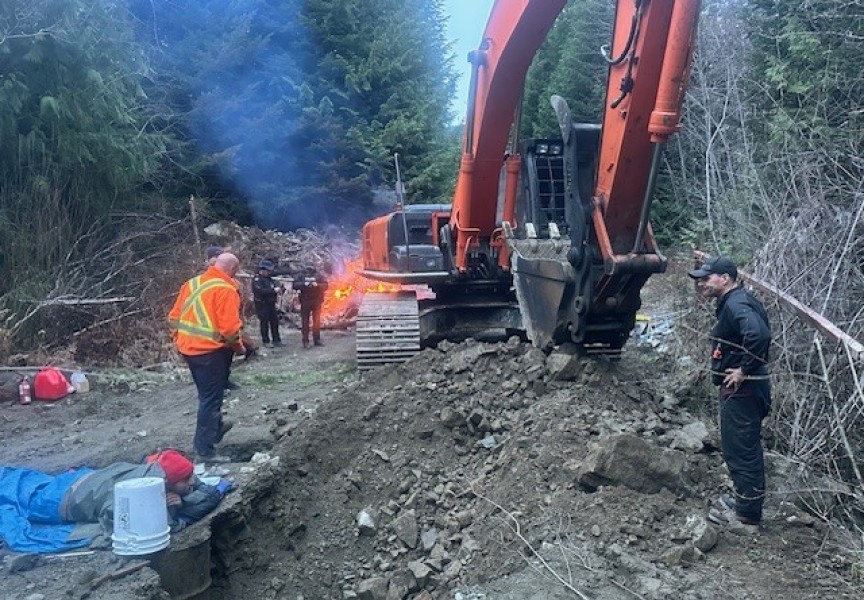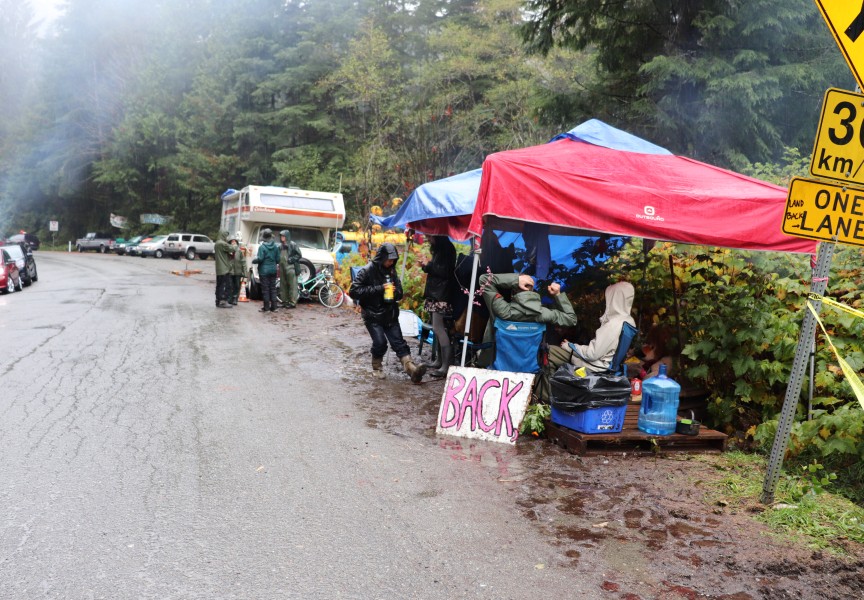As a working group begins to assess the Alberni Pacific Division sawmill’s future, Huu-ay-aht’s elected chief cautions that the parties involved will need to closely collaborate to find a solution – with keen participation from the province.
After what was initially identified as a six-month curtailment of operations last fall, on Jan. 26 Western Forest Products announced that the APD mill would not restart “in its current configuration”, leaving over 100 people out of work. The forestry company stated that a “multi-party working group” has been established to explore “viable industrial manufacturing solutions for the facility”, made up of representatives from WFP, the United Steelworkers union, First Nations and “contractually aligned businesses” tied to the APD operation.
So far a study has found few options for the large site that covers a southern portion of Port Alberni’s waterfront. Last year The Beck Group was commissioned by WFP, the Huu-ay-aht First Nations and C̕awak ʔqin Forestry Limited, a partnership between Western and the Huu-ay-aht-owned Huumiis Ventures.
“The report concludes the options for APD are very limited,” stated a Western Forest Products press release.
The mill’s closure affects the Huu-ay-aht’s forestry interests, a stake that has been growing in recent years to account for 60-75 per cent of the First Nation’s revenue from the Huu-ay-aht Group of Businesses. C̕awak ʔqin Forestry manages tenure over Tree Farm Licence 44, a 137-hectare section of Crown land south of Port Alberni and Great Central Lake.
Huu-ay-aht Chief Councillor Robert Dennis Sr. noted that the First Nation has members who worked at the APD mill – as does the Tseshaht First Nation – and a significant portion of timber harvested from Huu-ay-aht territory was being processed at the Port Alberni facility.
As the working group discusses APD’s future over the next three months, Dennis is stressing the need for the companies, union and First Nation to find a common goal.
“That’s following the theme of our name: C̕awak ʔqin Forestry, we are one. Let’s start working as one,” he said. “We have to show that we’re concerned about the worker and we want to find something.”
But Dennis also noted that the provincial government will need to take the needs of the parties involved seriously if a future is to be found for the large sawmill site. He said that regulatory stumpage fees for timber harvested from Crown land currently handcuff the ability of First Nations to economically benefit from their territorial resources.
“The Huu-ay-aht First Nation and all of the Nuu-chah-nulth First Nations have fiber in their backyard,” said Dennis. “Is there a sustainable use of this wood in our backyard? Sitting idle is no longer an option.”
“Stumpage is a payment for use of a public natural resource,” explained the Province of B.C.’s website in reference to the fee structure. “The money raised by stumpage is used to fund vital social services such as education and health care, and is sometimes shared with First Nations communities under forest consultation and revenue sharing agreements.”
Stumpage fees fluctuate each year, but a comparison of rates over the last half decade indicates one of the many challenges currently facing coastal forestry operations. In March 2016 the average fee listed by the province for cedar on southern Vancouver Island was $13.97 per cubic metre, while Douglas fir stumpage was $5.56. In March 2021 these respective rates had risen to $22.14 and $29.21 per cubic metre on the south island.
“Because the stumpage is so high it’s best for us to just leave the wood in the ground. The province needs to be a participant at this working group table,” added Dennis. “It’s just sad that with all the fiber we have in our backyard that we have to shut a mill down.”
In early 2017 Western shut down the Somass Division sawmill, a facility specializing in old-growth cedar that operated on Port Alberni’s waterfront for more than 70 years. Over 70 employees were affected by the mill’s closure.
This year other mills across the province have ceased operations, following an overall decline that was predicted in the provincial budget released in February 2022. The government’s financial plan forecasted a 12 per cent decrease in harvesting over the following three years, translating into 4,500 lost jobs out of the approximately 50,000 who were still employed in forestry.
Despite this trend, the Huu-ay-aht are looking to explore more opportunities in the industry. A mill to process hemlock is close to running at Sarita Bay, using an existing facility the First Nation acquired from WFP in 2017.
“Let’s try a small operation, see if we can sell some of that product in our backyard,” said Dennis. “Hopefully in the future we can increase that if people like to buy our product.”
With the future of APD yet to be determined, Western Forest Products’ CEO Steven Hofer contends that the coastal forestry sector “has a strong future”.
“We are committed to exploring options with partners to advance potential solutions for the APD facility and appreciate the support of the working group members who have stepped up and joined us in this important work.”

